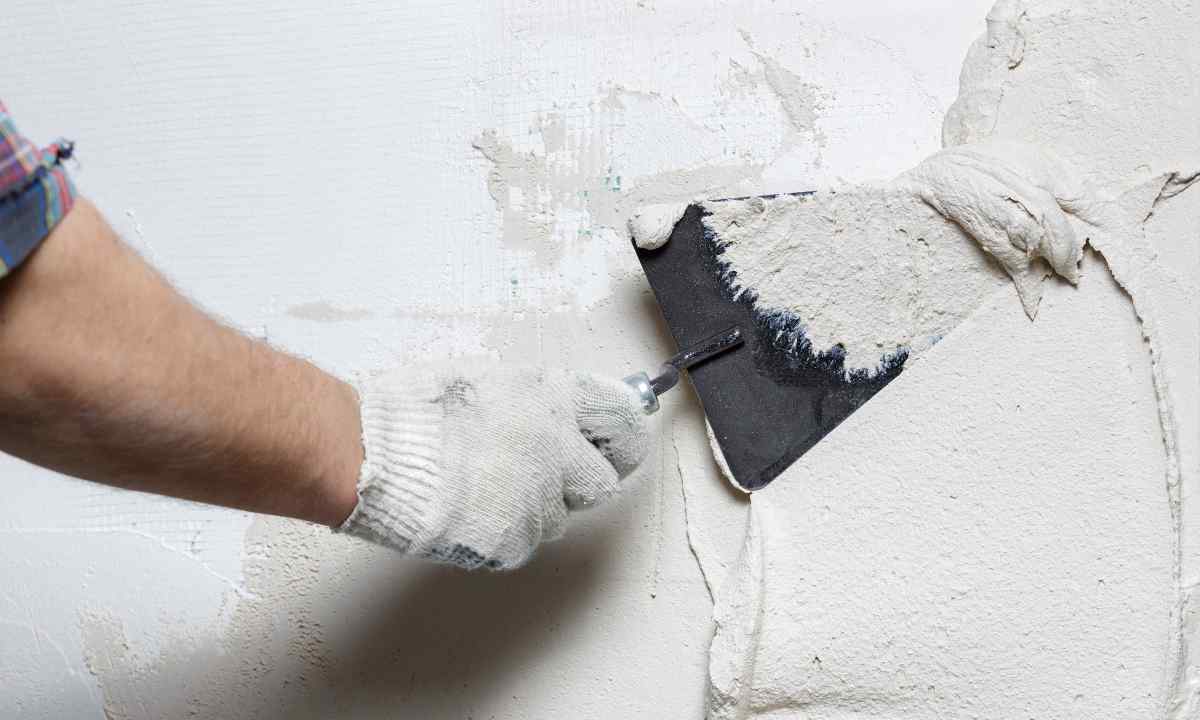To replace wall-paper and paints, various decorative plasters more often come. This practical material quite easy in use is very convenient for dressing of walls.
Decorative plaster allows to create refined and stylish interiors. It is quite simple to work with decorative plaster if to know highlights. First of all it is necessary to decide on type of finishing material, for each room there is the look plasters. Besides, it is necessary to calculate precisely how many mix will be required - solution should be produced completely, it is not stored.
Plaster in the form of dry mixes and ready solutions is on sale, dry mixes get divorced just before the beginning of works.
Types of decorative plasters
On internal characteristics decorative plaster is subdivided into groups: silicate, silicone, acrylic and mineral decorative plaster. Each type of finishing material assumes certain preparation of walls.
In damp rooms it is the best of all to use acrylic plaster, it has viscous consistence, is produced on the basis of pitch, practically does not absorb moisture. However acrylic – flammable material, the combination of such plaster to cotton heaters is not recommended. It is simple to work with acrylic plaster, she easily moves to various processing. Before finishing it is necessary to apply primer on walls, and plaster on walls is applied manually corrosion-proof with spatula or special purpose tool which can be got together with plaster. Acrylic plaster is used only in interior.
The most modern finishing material it is possible to call silicone decorative plaster. It can also be used in damp rooms as it does not absorb moisture. Silicone plaster approaches and for external works as perfectly resists to atmospheric actions, has ability of self-cleaning. It would be possible to call such plaster ideal finishing material if not its high cost and need of preparation before work. Primer when finishing by such plaster has to be used special, and its price too is high. Mineral plaster is produced on the basis of cement, delivered in sale only in the form of dry mix, gets divorced just before the beginning of finishing. Such plaster inexpensive, it is not subject to burning, well is suitable for interior and exterior finish. However mineral plaster has low plasticity, over time on it emergence of cracks, chips because of availability as a part of additions of crumb is probable. Mineral plaster initially has one color – white and to paint it is impossible (to tint) weight, for giving of desirable shade paint walls after finishing. Before works the surface which is subject to processing is grounded, using mixes with quartz sand. Silicate decorative plaster is produced on the basis of potash "liquid" glass. Such type of finishing materials is used, as a rule, for external works, or it is applied in finishing of non-residential premises. It is considered that silicate plaster does not possess sufficient indicators on ecological purity and safety for the person. To work with it it is difficult, certain skill and abilities is necessary: mix quickly dries, and before finishing the careful and accurate hashing is necessary. Use silicate plaster for external finishing also because material perfectly washes, possesses good indicators on vapor permeability.
Principles of work with plaster
Beginning work on finishing, carefully mix mix regardless of which you use plaster type. Prepare also the tool – trowel from plastic or metal with the convenient handle. If you have bought the plaster suitable for toning, mix it with shaded structure necessary to you (it is called textural paint). That plaster has strongly grappled with surface, primer is necessary – for each type of plaster the priming mixes are used.
It is possible not to paint decorative flocks plaster, the shade is given to this material already at the plant.
Apply plaster on wall then give it the required invoice or the structural drawing by means of the special roller or the palette. The figured roller, the palette and the toothed palette – here the main tools in creation of unique design. Plaster, as a rule, in two layers is applied. Each layer has to dry out well. If plaster is used such which is not subject to coloring in the course of preparation of mix, then walls can be painted only after full drying. As finishing material it is also possible to use plaster with additional decorative effects – there are ready mixes "silk", "velour", "sandstone", etc. The most expensive is considered the Venetian decorative plaster ("Venetian") – the surface after finishing becomes marble, brilliant. Independently it is difficult to apply the Venetian plaster, when choosing such finishing material it is better to ask for the help experts, however their services, as a rule, are slightly more expensive, than normal masters.
